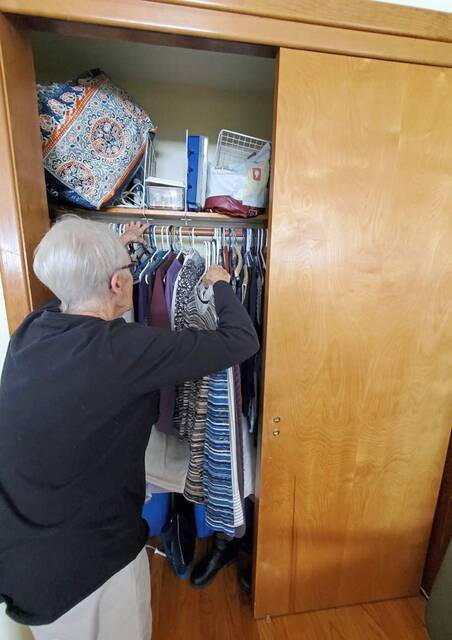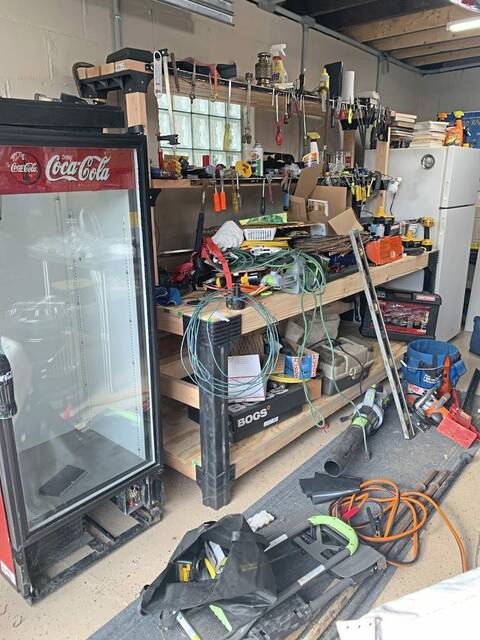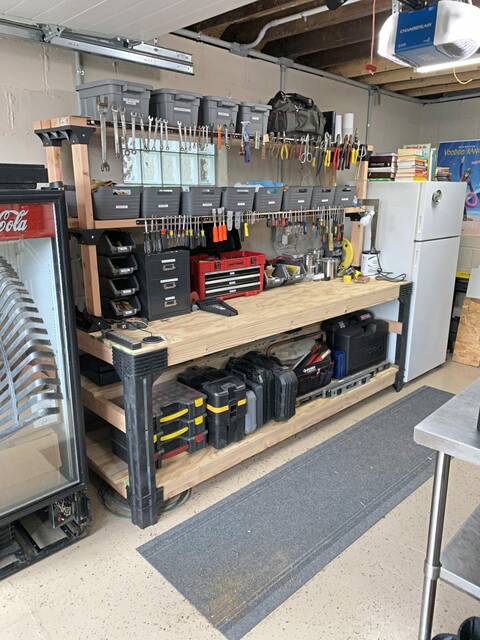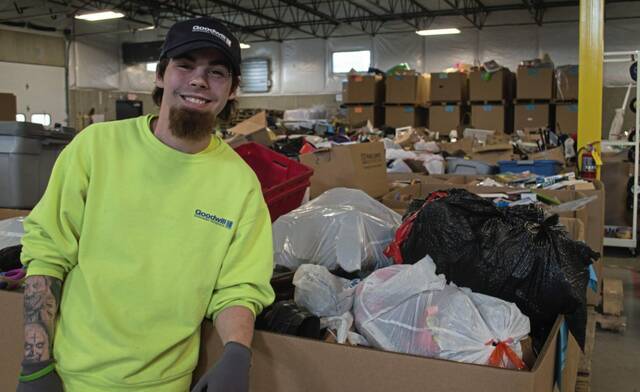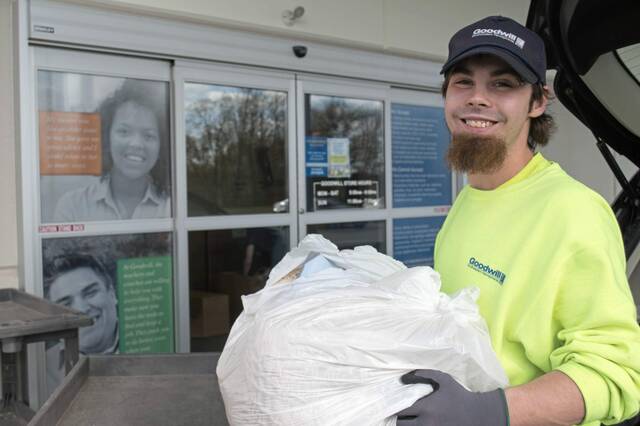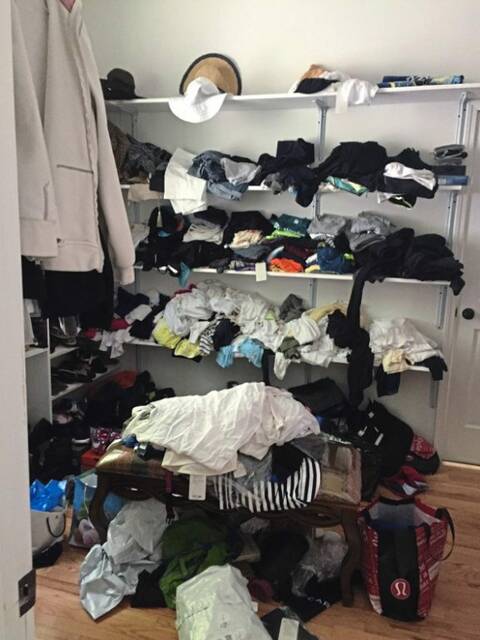Fall for it: As the weather cools, make your indoor living space more comfortable
Fall is a season of change.
The weather gets cooler and the leaves turn colors.
It’s a perfect opportunity to transition that wardrobe away from summer and prepare the home for more time spent indoors.
“Go room to room in your house to see what you can get rid of,” said Jody Adams, a certified professional organizer and owner of In Its Place, a company based in Greensburg that assists people in getting organized in Westmoreland and Allegheny counties.
Where to start
The kitchen is a good place to begin. Check dates on items in cabinets from canned goods to spices, as well as the refrigerator and freezer. Move those that expire soon to the front. Do an inventory of pots and pans and dishes and donate those that aren’t used.
“This is an excellent way to meal plan for the week so items close to going bad don’t spoil,” Adams said. “Also, if you’ve bought a food item and it’s still good, but you decide you will never use it, give it to your local food bank.”
Save this for a rainy day
Adams said to spend a rainy day going through photos.
“That would be the perfect time to create a scrapbook or decide on a way to organize photos,” she said. “Invite friends and family members over so you can share pictures with them and get their help with identifying people in the photos. Give them some, too. That can be a fun afternoon of reminiscing while you are also finding the right place for the images.”
The garage is also a good rainy day project. Bicycles might need to be stored as well as a lawnmower and beach chairs. Find snow shovels and ice scrapers. Make the space open enough so you can pull your car in when the weather gets bad.
“You don’t think about the extra time you need until you come outside to go to work and your windshield is full of ice and the car is covered in snow,” Adams said.
Clean out closets
In the bedroom, it’s time to look for blankets and comforters and clean out closets. That doesn’t just mean packing everything from summer into bags and boxes and storing them. Do an actual inventory of items based on if they were used. For clothing, think about whether you wore the piece, said Jill Yesko, a professional organizer from the North Side.
She founded Discover Organizing, a company based in Bridgeville to help others develop order in their lives and is author of “I’m Right Here: 10 WAYS TO GET HELP FOR HOARDING AND CHRONIC DISORGANIZATION.”
Yesko said when working with a client, she will have the person select five random clothing items at a time from the closet so as not to be overwhelmed by placing the entire contents on the bed and then not knowing where to start.
If something doesn’t fit, make a decision on whether to keep it because you will lose the weight or give it a new home. Put laundry away immediately. Don’t use chairs and exercise equipment as places to throw clothing. It’s best to keep apparel that is business casual with many people working both at home and in the office because of the pandemic, Adams said.
“Make space for the things you use,” Adams said. “Go through your clothes and donate items you haven’t worn. If you have children, make sure the clothes fit and if they don’t, give them away.”
Yesko understands about being emotionally attached to an item and said it’s OK to keep some items. But, look at each one and maybe take a photo of the item or items and make a book so you can look through it and still be connected to those items.
Start in small increments so you aren’t overwhelmed, Yesko said, such as picking five items randomly out of the closet and deciding whether to keep, toss or donate. If there is clothing that doesn’t fit but you believe you will wear again, then place those items in a storage container.
Use hooks to hang purses and belts and scarves. Yesko recommends taking five minutes each day to go through the purse and toss what’s not needed, and use an envelope or container to store receipts. Place items like makeup in one small bag inside a bigger purse.
“Wear what fits you now,” Yesko said. “You look good just the way you are. Be in the moment.”
Goodwill is always in need of housewares and cooking utensils and dishes, said Barb Franks, manager of the Cheswick store. She recommends packing like items — don’t mix glass and pots and pans with clothing. It’s best to have shoes and purses in separate bags, she said. Curtains, sheets and linens are also needed. They don’t take large appliances or large pieces of furniture or televisions. A microwave or small chair and end table are OK.
Home for the holidays
This is the perfect time to sort through holiday decorations, which accumulate over years. They can be donated or given to children and grandchildren. Franks said fall and spring are the busiest times for people to drop off items. She said something one person might think won’t be wanted can be used for a Halloween costume or that not-so-popular sweater is perfect for the ugly Christmas sweater party.
“We always need holiday decorations,” said Franks. “For any holiday, because we put them out all year long.”
Home office
Because of the pandemic, people may be working at home more.
Go through paperwork on a regular basis; don’t let mail pile up for days. For those using the dining room as an office, get a filing cabinet on wheels so it can be rolled into a corner when you need to use the table for dinner. Pick one drawer in the buffet to hold your office supplies.
“The more accessible things are, the happier you will be,” Adams said. “That also causes less stress because you aren’t spending more time searching for items.”
Books are good to donate to Goodwill, Franks said.
“We sell a lot of books,” she said. “If you have something you aren’t going to use and it’s in pretty good shape, we would love to have it — especially now because a lot of people are struggling and can really use these items.”
Tidy outdoor spaces
Before stashing your lawn care equipment, give your home and landscape some end-of-season attention. Use a power washer to clean lawn furniture and store it away from the elements or use covers to protect it. Family Features recommends cleaning out gutters and removing debris from flower beds to encourage proper drainage.
Check for repair projects
Give your home a thorough inspection to identify any problems that need attention before cold weather sets in. Look for concerns like loose shutters or siding, cracked or loose shingles, cracks and gaps around doors and windows that may allow moisture or cold air to creep in. Severe weather and cycles of freezing and thawing can exacerbate these problems, so it’s best to make repairs before they result in major damage.
In addition to keeping floors clean and allergens under control, there are other steps you can take to promote better air quality while you’re spending more time indoors. Scheduling service for your furnace can help ensure it’s in good condition before cold weather hits. This is also a good time to replace your air filter and consider a duct cleaning. Take time to clean ceiling fans and reverse the blades so the air circulates but fans don’t create a chilling effect.
“You make appointments for other things, so why not make an appointment to check your furnace or clean out your closet,” said Yesko, adding the app Homezada.com can help keep things on schedule. “That might help you commit to doing it.”
JoAnne Klimovich Harrop is a TribLive reporter covering the region’s diverse culinary scene and unique homes. She writes features about interesting people. The Edward R. Murrow award-winning journalist began her career as a sports reporter. She has been with the Trib for 26 years and is the author of “A Daughter’s Promise.” She can be reached at jharrop@triblive.com.
Remove the ads from your TribLIVE reading experience but still support the journalists who create the content with TribLIVE Ad-Free.


